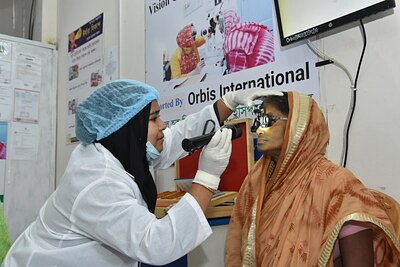
Beyond Sight: Why Millions of Women Globally Are Denied Simple Eye Care
A new study reveals a stark disparity: women in many parts of the world face systemic barriers to accessing basic eye care, with profound consequences for their lives and communities. Can targeted interventions bridge the gap?
Beyond Sight: Why Millions of Women Globally Are Denied Simple Eye Care
By Brian Nelson
New research paints a sobering picture: millions of women around the world are being denied access to a remarkably simple solution for vision impairment – a pair of glasses. A recently published study in Ophthalmology, coupled with analysis of broader global health trends, reveals a significant gender disparity in access to basic eye care, particularly in Southeast Asia, East Asia, Oceania, and low-income urban settings. While the problem isn’t a lack of solutions, it’s a complex web of social, economic, and cultural barriers preventing women from receiving the care they need.
The Disparity in Numbers
The study, a systematic review of existing research, found that 56% of reviewed studies reported women having lower access to glasses than men. This isn’t an issue present in childhood; the disparity largely emerges in adulthood, suggesting societal pressures and life stages exacerbate the problem. While the numbers are concerning on their own, they represent more than just visual acuity; they represent lost opportunities for education, employment, and a diminished quality of life.
“It’s a heartbreaking situation when a simple, inexpensive intervention can dramatically improve someone’s life, yet so many are left in the dark,” says a representative from a leading global health NGO working in the region. “We’ve seen firsthand how providing glasses can empower women to return to school, start businesses, and contribute more fully to their communities.”
Beyond Cost: The Hidden Barriers
While the cost of glasses is a factor, the issue is far more nuanced. Researchers point to a confluence of challenges unique to women in many parts of the world. These include a lack of awareness regarding eye health, limited financial autonomy – often reliant on family income controlled by male relatives – and, crucially, the weight of domestic responsibilities.
“Women are often expected to prioritize the needs of their families over their own health,” explains a public health specialist working in Bangladesh. “Taking time away from household chores or childcare to attend an eye exam can be seen as selfish or irresponsible, even if it’s essential for their well-being.”
These barriers are compounded by cultural norms that dictate women seek permission from male family members for healthcare decisions. In many communities, women also feel uncomfortable seeking care from male doctors, further limiting their access to treatment.
Orbis International’s Holistic Approach
Organizations like Orbis International are taking a multi-faceted approach to address this complex issue. The organization doesn’t just provide glasses; it focuses on building sustainable eye care systems and empowering local communities. A key component of their strategy is training female eye care professionals.
“We believe it’s crucial to have local healthcare providers who understand the unique challenges women face and can provide culturally sensitive care,” says a spokesperson for Orbis. “By training and empowering female doctors and nurses, we can build trust within communities and ensure women receive the care they deserve.”
Beyond training, Orbis is also addressing gender-specific conditions like trachoma, a leading cause of preventable blindness in women, and retinopathy of prematurity, which disproportionately affects premature babies and can lead to vision loss later in life. They are also working to integrate eye care services into existing maternal and child health programs.
The Economic Impact of Untreated Vision Loss
The consequences of untreated vision loss extend far beyond individual suffering. Economically, it represents a significant drain on productivity and development. A recent study by the World Bank estimated that vision impairment costs the global economy over $411 billion annually in lost productivity.
“When women can’t see clearly, they are less able to participate in the workforce, earn income, and contribute to their families,” explains a development economist specializing in gender equality. “Providing access to eye care is not just a matter of social justice; it’s also a smart economic investment.”
Scaling Solutions: A Call to Action
Addressing this global crisis requires a concerted effort from governments, NGOs, and the private sector. Investing in eye care infrastructure, training local healthcare professionals, and raising awareness about eye health are all crucial steps. However, it’s equally important to address the underlying social and economic factors that contribute to gender inequality.
“We need to challenge the norms that prevent women from prioritizing their own health and empower them to make informed decisions about their well-being,” says a representative from a women’s rights organization. “That means ensuring women have access to education, economic opportunities, and a voice in their communities.”
The situation is complex, but the solution, in many cases, is remarkably simple: a pair of glasses. But providing those glasses is only the first step. Bridging the gap requires a holistic approach that addresses the systemic barriers preventing millions of women from seeing a brighter future.
